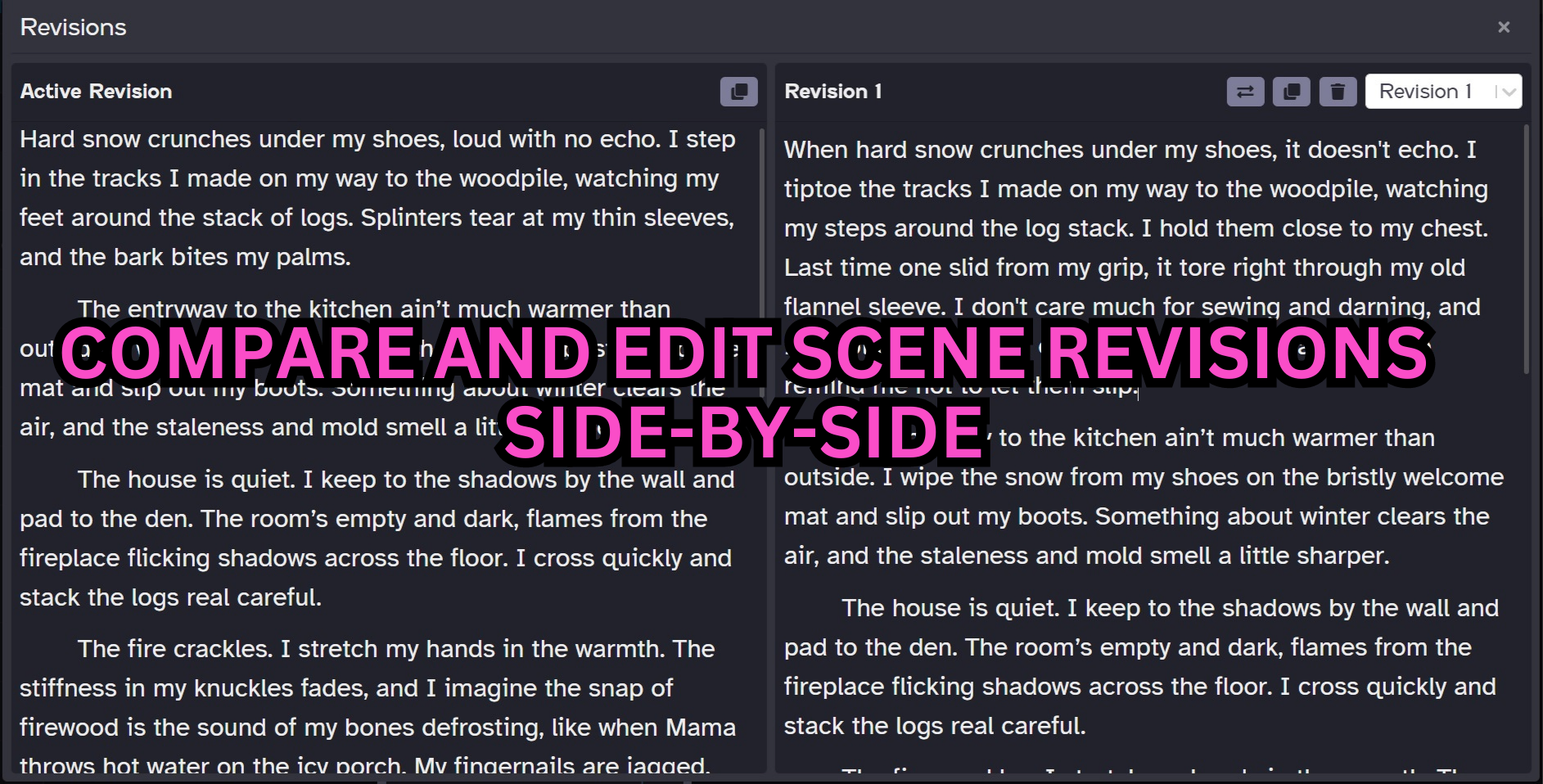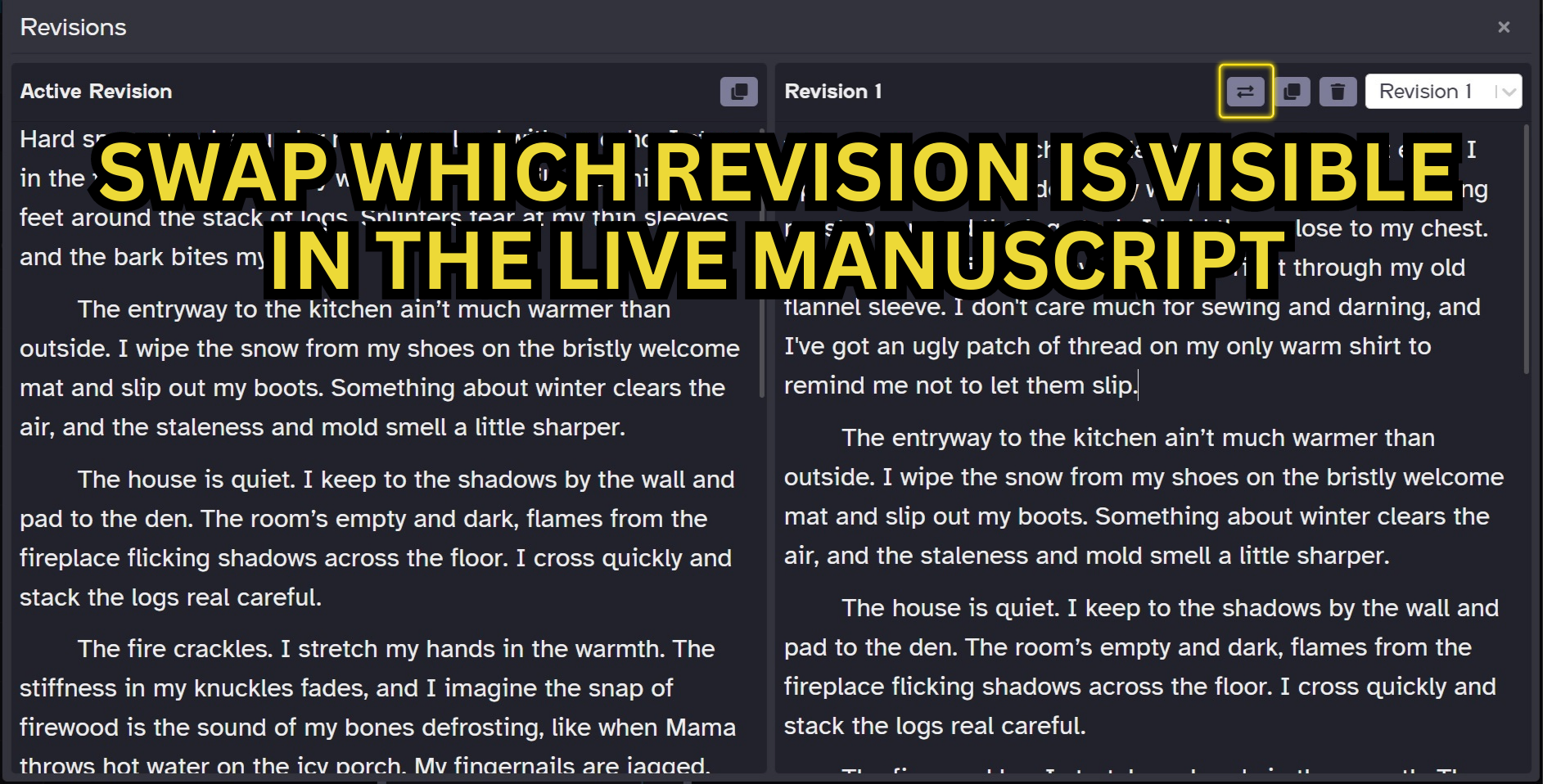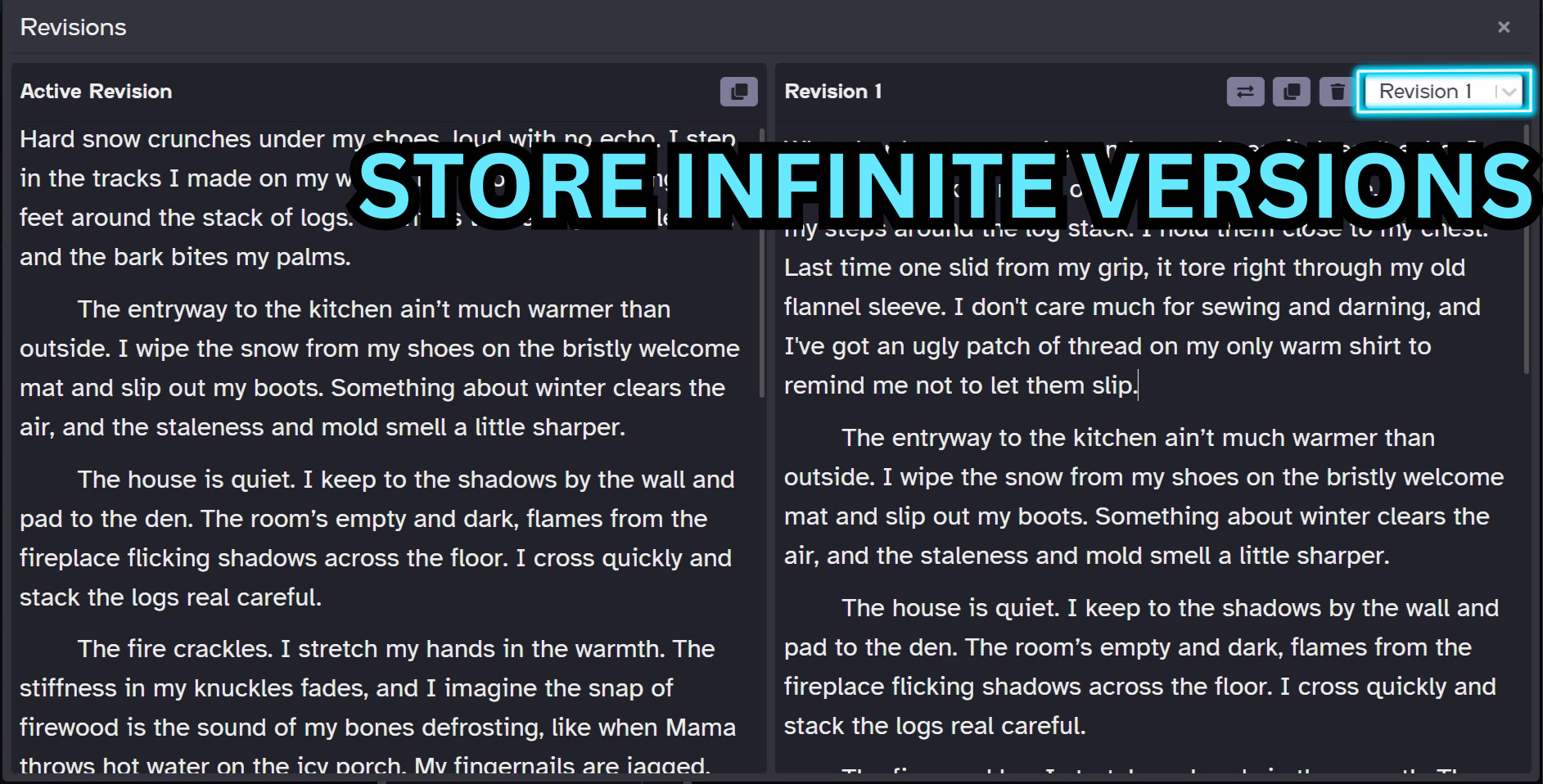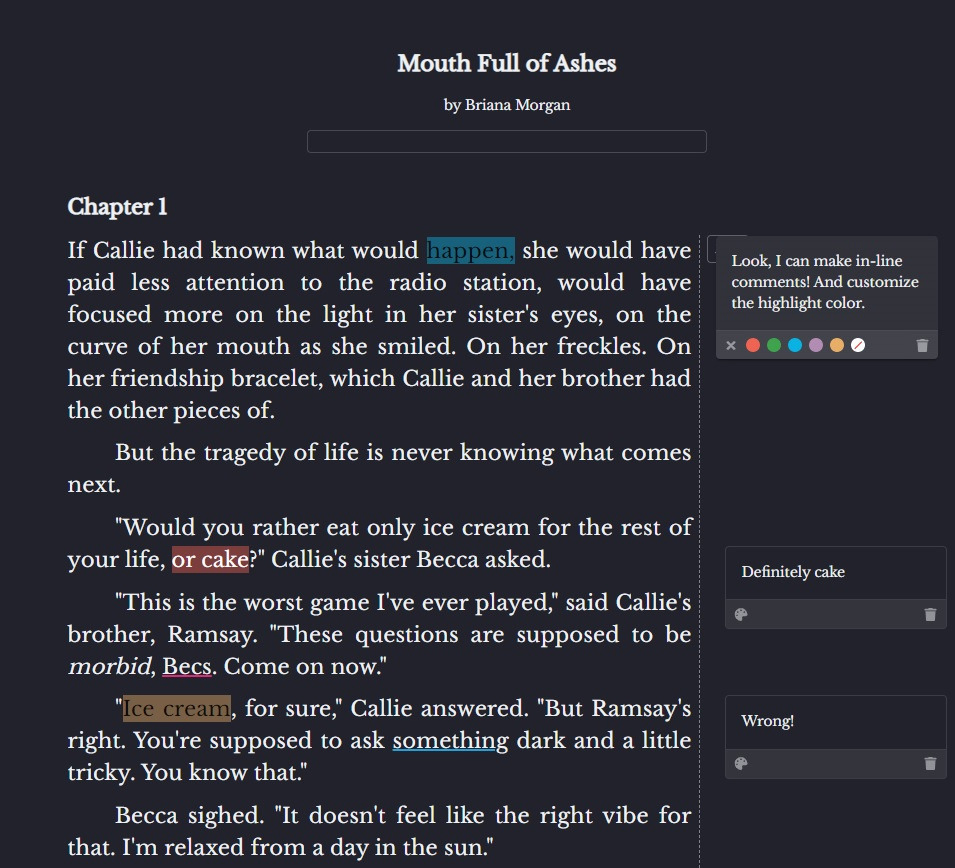How to Revise a Book with NovelPad: taking control of your writing process
Hannah Lee Kidder
NovelPad Author
Revising a book is hard. Probably one of the hardest things about writing a book, actually. But NovelPad makes it a lot easier. Here are my favorite features for revising a book in NovelPad, plus a few tips on how to use them.
1. Side-by-side scene revisions
This is one of the coolest NovelPad features (in my humble opinion): Side-by-side scene revisions.
Have you ever gotten into the weeds of revising, then decided you did too much and wanted to start over with the original draft? You can only hit "undo" so many times before you start saving separate Microsoft Word documents of each version, which you might be smart enough to label with timestamps (or, like many writers, you label your documents with a keyboard smash and make that a problem for Future You).
Well, NovelPad saves the entire scene $ revision $ headache. You can see your previous draft and current draft next to each other while you revise.

When you have a version you're happier with, simply hit "swap" to replace the old scene with your revised scene in the main manuscript.
If you change your mind, just swap them back with one click!

NovelPad saves an unlimited number of scene revisions, keeping your past versions safely tucked away in case you ever need them.

The side-by-side scenes feature, plus the endless library of saves, entirely removes the Revisions Cold Feet and lets you really experiment with different scenes until you find what fits.
As someone who once wrote nineteen fully different versions of a story before I had one I was happy enough with to publish...NovelPad has saved me a lot of time that I previously would have spent ripping out my hair by the roots.
2. ProWritingAid integration
NovelPad comes equipped with a ProWritingAid integration. ProWritingAid is a comprehensive editing tool to check for grammar, readability, awkward structure, and many other sentence issues.
This can give you a big head start on the editing process, whether you're self-editing, hiring a professional, or sending your novel out to agents without a "proper" edit.
In NovelPad's settings, you can direct it to check for spelling, grammar, and/or style to receive the type of feedback you find most helpful. You can also disable it entirely while you're drafting, if you find the underlines and tips distracting during your writing sessions.
TIP: If you already have the ProWritingAid browser extension, go ahead and disable it for NovelPad, else they will be screaming and hollering over each other, causing an unnecessary kerfuffle.
3. Share with beta readers and editors
Once you're through with your own revisions, it's probably time to get some feedback! Grab your shareable links and let your writing partners, beta readers, and editors leave comments and highlights for further revision and edit suggestions.

When you $ merge$ their edits with your scene, all of your reviewer's changes and comments are pulled into the current version of your scene, while NovelPad saves your original content as a revision.
This allows you to see your original scene next to their edited scene to decide which changes to keep, which majorly simplifies the process.
4. Linkable notes
The dynamic $ Notes$ function allows users to create their own writing process. The organization and linking capabilities make it possible to keep detailed outlines, research and world-building notes, and revision ideas.
For most novelists, trying to do multiple tasks at once can throw them off and make it take even longer. Instead, it's typically more effective to focus on drafting, then revisions, then editing. Doing it all at once might seem more efficient, but it almost always is not.
Notes allow you to keep your "messy" drafts, notes, ideas, outlines, revision reminders, and brainstorming separate from your main manuscript, which keeps everything clean and focused. Instead of changing things as you go and making tons of scene revisions, you can keep an ongoing list of things you would like to change in your next draft, which will jumpstart the revision process later.
When you create a Note to reference for revisions, you can link it to the specific scene, chapter, character, or any other element for easy retrieval.
By keeping an ongoing list of revision to-dos, you're setting yourself up for an easier second draft without distracting yourself from the first draft. Linking those Notes to relevant scenes makes it even more streamlined and simple.
What do you think: Does NovelPad sound like it could simplify your revision process? $ Try them out for free$ , then $ let me know$ how it goes!$ $
Happy revising!
Like what you're reading?
Join other authors like you in NovelPad’s free writing community!
Join the communitySimilar Posts
What File Formats are Accepted by Kindle Direct Publishing?
File types for ebooks, paperbacks, and hardbacks on Amazon's KDP.
Ollie Ander
Is probably just a couple cats in a trench-coat—the hair shedding and sunlight napping are highly suspect.
The Writer’s Resolution Guide 2024
Goal ideas and strategies for your new writing year.
Sage Kay
Writer, reader, outfit repeater.
Do Self-Published Authors Make More Money?
Royalty rates, merchandise sales, ad control, and other ways self-published authors stand to make more money.
Bella Rose Emmorey
book editor, rogue behaviorist, digital marketer, writer, brand builder, plant aunt, and cheese enthusiast.
How to Publish on Kindle Unlimited | A Comprehensive Step-by-Step Guide
Everything you need to know about enrolling your book on Amazon's Kindle Unlimited.
Ollie Ander
Is probably just a couple cats in a trench-coat—the hair shedding and sunlight napping are highly suspect.
What is Write-to-Market? An Author's Fast-Track to Earnings
Writing to market is one of the most successful sale strategies for self-published authors. Here's how.
Bella Rose Emmorey
book editor, rogue behaviorist, digital marketer, writer, brand builder, plant aunt, and cheese enthusiast.
When is the best time to publish a horror novel? [Peak Sales Method]
Make the most of your horror book launch by strategizing with these tips.
Bella Rose Emmorey
book editor, rogue behaviorist, digital marketer, writer, brand builder, plant aunt, and cheese enthusiast.